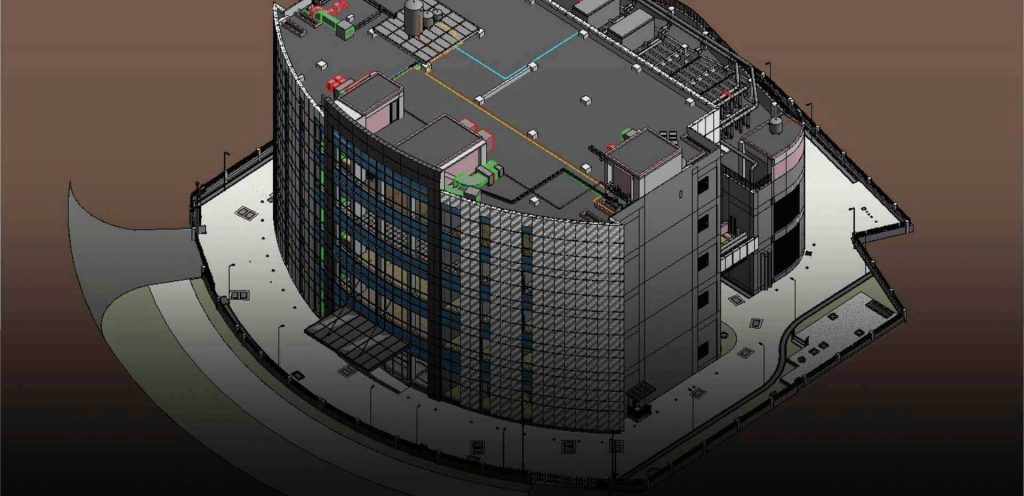In the ever-evolving landscape of architecture, innovation is the key to staying ahead. Designing structures that not only meet but exceed expectations requires a blend of creativity, functionality, and efficiency. Fortunately, technological advancements have provided architects with powerful tools to achieve these goals. Among these tools, Building Information Modeling (BIM) stands out as a revolutionary approach that has transformed the way architectural projects are conceived, designed, and executed.
BIM is a digital representation of the physical and functional characteristics of a building. It is a collaborative process that allows architects, engineers, and construction professionals to work together on a shared platform, integrating various aspects of the project seamlessly. From initial conceptualization to final construction and beyond, BIM serves as a comprehensive database that contains vital information about every aspect of the building, including geometry, spatial relationships, geographic information, quantities, and properties of building components.
Improved Collaboration
BIM fosters collaboration among different stakeholders involved in a project. Architects, engineers, contractors, and clients can all work together in real-time, sharing ideas, feedback, and insights. This collaborative environment encourages innovation by bringing diverse perspectives to the table and facilitating the exchange of innovative solutions.
Iterative Design Process
With BIM, architects can easily create, modify, and analyze design iterations. The parametric modeling capabilities of BIM software allow architects to explore various design options quickly and efficiently. By iteratively refining their designs based on feedback and performance analysis, architects can uncover innovative solutions that optimize both form and function.
Data-Driven Design Decisions
BIM provides architects with access to vast amounts of data that can inform design decisions. From environmental performance metrics to cost estimates and material specifications, Architectural BIM Services to make informed choices at every stage of the design process. By leveraging this data, architects can optimize their designs for efficiency, sustainability, and user experience, leading to innovative solutions that meet the needs of both clients and end-users.
Visualization and Simulation
BIM enables architects to visualize their designs in 3D and simulate various scenarios to assess performance. Virtual reality (VR) and augmented reality (AR) technologies further enhance this capability, allowing architects to immerse themselves and their clients in the proposed design. By experiencing the design firsthand, stakeholders can provide valuable feedback and contribute to the development of innovative solutions.
Prefabrication and Modular Construction
BIM facilitates the integration of prefabrication and modular construction techniques into the design process. By modeling building components digitally and optimizing their fabrication off-site, architects can streamline the construction process and reduce waste. This approach not only accelerates project delivery but also enables architects to explore innovative design solutions that leverage the benefits of prefabrication and modular construction.
Sustainability and Resilience
BIM plays a crucial role in designing sustainable and resilient buildings. Architectural BIM Services analyzing factors such as energy performance, daylighting, and thermal comfort, architects can optimize their designs for environmental performance. BIM also enables architects to explore innovative strategies for mitigating climate change impacts, such as passive design strategies, green roofs, and renewable energy systems.
Adaptive Reuse and Historic Preservation
BIM can be used to document existing buildings and heritage sites accurately. By creating digital replicas of historic structures, architects can explore innovative approaches to adaptive reuse and historic preservation. BIM allows architects to assess the structural integrity of existing buildings, identify opportunities for renovation and rehabilitation, and propose innovative design interventions that respect the building’s heritage while meeting the needs of modern users.
Performance-Based Design
BIM enables architects to evaluate the performance of their designs based on various criteria, such as structural integrity, thermal comfort, and occupant satisfaction. By conducting performance simulations and analyses, architects can identify areas for improvement and refine their designs iteratively. This data-driven approach to design empowers architects to innovate by pushing the boundaries of what is achievable in terms of performance and functionality.
Regenerative Design
BIM facilitates regenerative design principles by allowing architects to design buildings that contribute positively to their surrounding environment. By integrating features such as green spaces, rainwater harvesting systems, and renewable energy sources, architects can create buildings that regenerate ecosystems, enhance biodiversity, and promote human health and well-being. BIM enables architects to quantify the environmental and social impact of their designs and explore innovative strategies for creating regenerative built environments.
Future-Proofing Designs:
BIM helps architects future-proof their designs by anticipating future trends and challenges. By incorporating flexible design elements, such as adaptable spaces, modular components, and smart technologies, architects can create buildings that can evolve and adapt to changing needs over time. This forward-thinking approach to design ensures that buildings remain relevant and resilient in the face of technological advancements, demographic shifts, and environmental changes.
Conclusion
Architectural BIM services are driving innovation in the industry by empowering architects to explore new design possibilities, optimize performance, and create sustainable and resilient built environments. ENGISOFT ENGINEERING – BIM Staffing & BIM Services by leveraging the power of technology, architects can push the boundaries of traditional design practices and develop innovative solutions that meet the needs of today’s complex and rapidly evolving world. As we continue to embrace the opportunities afforded by BIM, the future of architecture looks brighter than ever, filled with endless possibilities for innovation and creativity.

